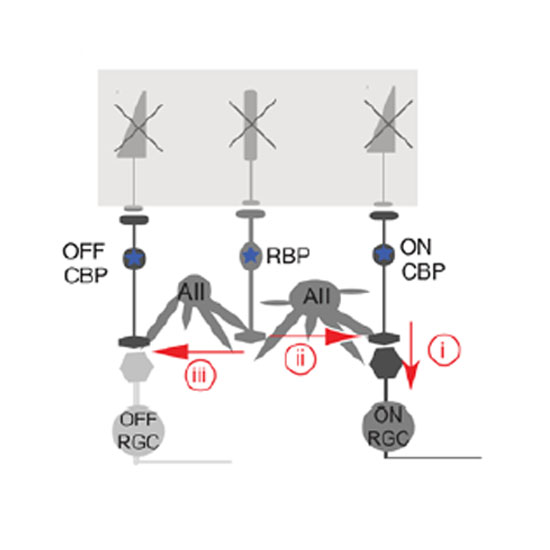Photopharmacological control of bipolar cells restores visual function in blind mice
05-Jun-2017
Clin Invest. 2017;127(7):2598–2611, https://doi.org/10.1172/JCI92156
Clin Invest., online article
Photopharmacological control of neuronal activity using synthetic photochromic ligands, or photoswitches, is a promising approach for restoring visual function in patients suffering from degenerative retinal diseases. Azobenzene photoswitches, such as AAQ and DENAQ, have been shown to restore the responses of retinal ganglion cells to light in mouse models of retinal degeneration but do not recapitulate native retinal signal processing. Here, we describe diethylamino-azo-diethylamino (DAD), a third-generation photoswitch that is capable of restoring retinal ganglion cell light responses to blue or white light. In acute brain slices of murine layer 2/3 cortical neurons, we determined that the photoswitch quickly relaxes to its inactive form in the dark. DAD is not permanently charged, and the uncharged form enables the photoswitch to rapidly and effectively cross biological barriers and thereby access and photosensitize retinal neurons. Intravitreal injection of DAD restored retinal light responses and light-driven behavior to blind mice. Unlike DENAQ, DAD acts upstream of retinal ganglion cells, primarily conferring light sensitivity to bipolar cells. Moreover, DAD was capable of generating ON and OFF visual responses in the blind retina by utilizing intrinsic retinal circuitry, which may be advantageous for restoring visual function.











